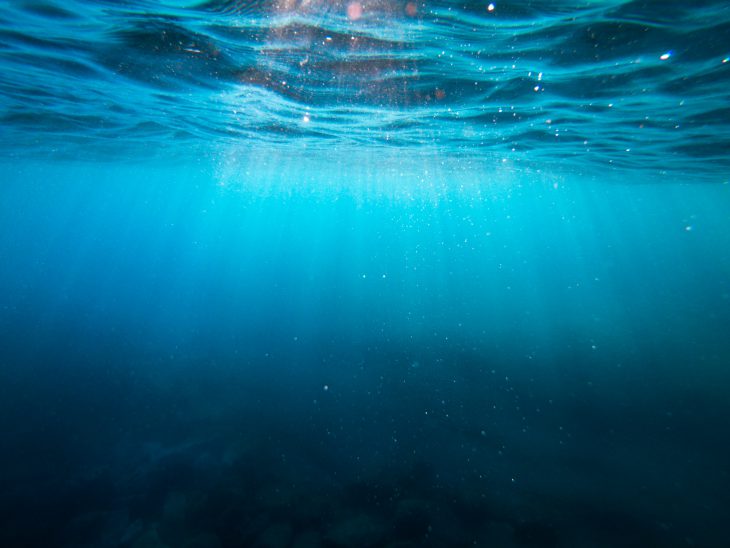Understanding the global carbon cycle we live in is crucial to understanding our world, especially the oceans. One way we do this is by studying microorganisms, which are vital to the carbon cycle, because they eat and excrete carbon.
Up until about 30 years ago, microscopic organisms called archaea were thought to only be found in extreme environments such as volcanic springs. It was difficult to identify them because of their resistance to lab culturing. However, improvements in lab technology have allowed scientists to discover that archaea also live in more moderate conditions.
Curiously, researchers found them in the same environments as bacteria. They appeared to eat the same food and share the same predators. This study explores how this might be possible through two mechanisms – resource partitioning and selective predation.
Resource partitioning is when two species split the food up by eating different things from different places, eating them at different times, etc. Selective predation is when outside predators eat more archaea than bacteria, or vice versa, giving one a survival advantage.
In this study, scientists researched how the two organisms were able to peacefully coexist. Traditionally, to study a microscopic organism, scientists had to grow it in a lab, and then identify it by its physical traits. This means they were not able to learn about organisms that they couldn’t grow in the lab, such as archaea. Now, we have technology called PCR that makes the process easier.
PCR involves selecting a gene from an organism and copying it.The DNA copied is part of the gene for a cell structure called a ribosome. In bacteria and archaea it is called “16S rRNA.” Every prokaryote has almost the same 16S sequence, with variations between species that allow researchers to differentiate between them. In this study, the scientists used “nested PCR”, which is the same process repeated multiple times in order to get a more exact section of DNA.
First, the researchers purchased a custom piece of genetic material called a primer. The primer attaches to the part of the DNA they want to copy, attracting an enzyme to start copying. This process is repeated with each copy simply by changing the reaction temperature. After 20-30 repetitions, they had billions of copies of the target gene. Next, they fed it into another system to determine the gene’s sequence. Lastly, they used computers to match that sequence to a database of millions of others, and to tell them which organism it matches.
Next, they wanted to know which organisms ate which foods. They collected duplicate water samples from the euphotic zone (65-115 meters below sea level), the mesopelagic zone (365-835 meters below sea level), and the bathypelagic zone (2,335-2585 meters below sea level) in three different places in the Atlantic ocean (see image below for ocean layers). One set of duplicates was dosed with urea, and one with acetate. The scientists chose these nutrients because they are commonly consumed by archaea and bacteria.
Both the urea and acetate used in this study were unique – they were tagged with a heavier carbon atom called carbon-13. Most carbon is carbon-12, but carbon-13 has an extra neuron, making it heavier. Both types end up in the DNA of the organism that eats it. This makes it easier to separate the archaea from the bacteria in the lab based on what they ate.
To get the results of this experiment, the scientists collected and purified the DNA from the archaea and bacteria from each of the different samples. Then, they spun the DNA extremely fast in order to separate the organisms based on whether they ate acetate, urea, or both. The DNA with the carbon-13 sank lower than the DNA with carbon-12, creating an upper and lower band the scientists could see.
In the urea sample, it appears that the deeper in the ocean you go, the more archaea eat the urea. In the bathypelagic zone, urea was almost exclusively eaten by archaea. In the acetate test, both archaea and bacteria ate the acetate in almost all of the samples, with the exception of one in the bathypelagic zone where only bacteria ate it. It looks like bacteria and archaea manage to share the ocean by eating the same food at different depths.
Thirty-seven eukaryotes (like algae, parasites, etc) were identified across the 36 ocean water samples, using a method similar to the 16S technique. The results showed that 10 ate only archaea, 7 ate only bacteria, 17 ate both, and 3 ate neither. This would suggest that most eukaryotes don’t have a preference between archaea and bacteria, but among those that do, archaea is more likely to be preferred.
This experiment allowed scientists to learn more about the food webs in our oceans, and how it contributes to the global carbon cycle. Understanding more about how the Earth works helps us answer bigger questions related to climate, energy, where life came from, and more!


